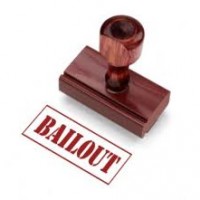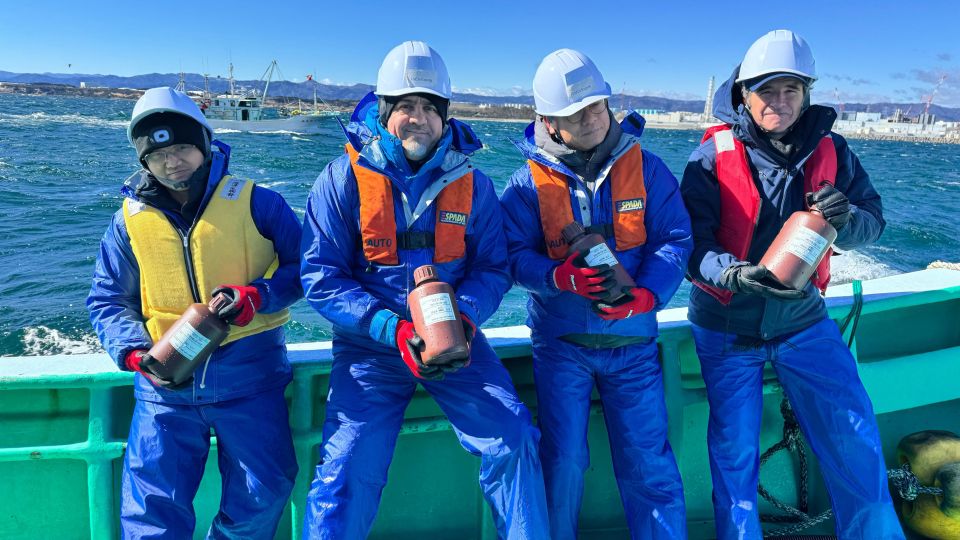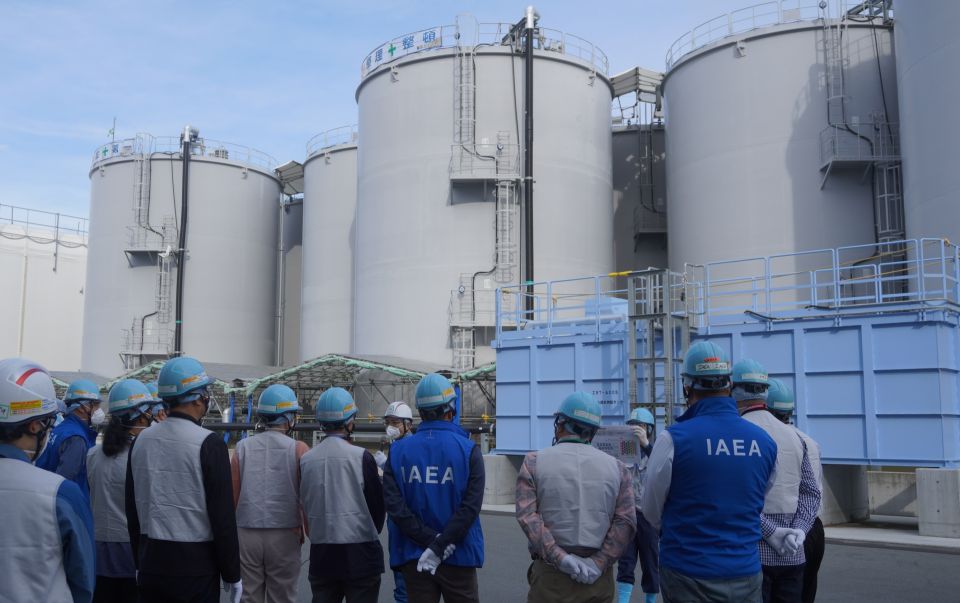Japan stressed out over future of its nuclear reactors
Safety checks by the IAEA haven't boosted public confidence
 An International Atomic Energy Agency expert mission team to Japan arrived there the last week of January to check on so-called "stress tests" of the nation's 54 reactors. While preliminary responses from the team are generally favorable, a final report, including proposed corrective actions, is still forthcoming.
An International Atomic Energy Agency expert mission team to Japan arrived there the last week of January to check on so-called "stress tests" of the nation's 54 reactors. While preliminary responses from the team are generally favorable, a final report, including proposed corrective actions, is still forthcoming.
In the meantime, the Japanese government and the Tokyo Electric Power Company (TEPCO), as well as Japan's other nuclear utilities, find themselves tied up in knots about how to restart shut down reactors.
Japan's nuclear energy industry continued a domestic downward spiral in January with only three reactors remaining on the grid. At the rate things are going, all of the country's nuclear reactors will be closed by May. Japan gets 30 percent of its electricity from them. The lack of power, and fuel replacement costs, contributed in January to the nation's first balance of payments trade deficit in more than three decades.
The IAEA team said in its preliminary report that the comprehensive safety assessments that are being carried out are generally consistent with the agency's international standards. Japan's nuclear utilities are conducting the reviews based on instructions from the Nuclear Industrial Safety Agency (NISA), which is soon to be reorganized as an independent agency.
An incomplete grade?
 Two areas of vulnerability highlighted in the IAEA preliminary report as missing pieces in Japan's stress tests are seismic safety margins and severe accident management. In the diplomatic language of a United Nations agency, the IAEA wrote that NISA should address these topics in greater depth and soon.
Two areas of vulnerability highlighted in the IAEA preliminary report as missing pieces in Japan's stress tests are seismic safety margins and severe accident management. In the diplomatic language of a United Nations agency, the IAEA wrote that NISA should address these topics in greater depth and soon.
James Lyons, leader of the eight-member IAEA team, told the New York Times on February 1, "there is room for improvement."
IAEA spokesman Greg Webb clarified to the newspaper that the agency was not certifying the safety of Japan's nuclear reactors.
Critics of the stress tests quickly latched on to this language. They said that the reviews ignore the potential for multiple natural disasters occurring simultaneously, which is what happened on March 11, 2011. Also, critics said that the tests don't take into account the age of the reactors.
What's significant about the criticisms is that they come from nuclear experts inside the industry. Masashi Goto, who says his expertise is in design of nuclear reactors, and is an adviser to NISA, told wire services that the stress tests are computer simulated and do not take into account operator errors and multiple failures of equipment causes by a cascade of natural disasters.
Hiromitsu Ino, a professor at Tokyo University, said that neither NISA nor the nuclear utilities updated the test protocols to take the Fukushima accident into account.
TEPCO responded that the comments from the advisory committee are valid and agreed to revise the simulation. However, according to Japanese English language media reports, TEPCO's calculation aren't comprehensive enough to satisfy critics who say that they also don't take into account damage from hydrogen explosions, the resulting debris, leaking radioactive water, and other issues that hampered the emergency response for multiple reactors at Fukushima.
Rebuilding public confidence
 Japanese nuclear utilities have hoped that the visit by the IAEA team would bolster public confidence in the restart of the reactors. Local communities around the reactors, which benefit from work force payroll, taxes, and other economic benefits, are anxious for the reactors to restart soon. However, the further away you get from the plants, the more anxious the population becomes about them. While provincial government officials have no legal power to stop the reactors from restarting, Japan Prime Minister Yoshihiko Noda has said that he will take community feelings into account in his decision.
Japanese nuclear utilities have hoped that the visit by the IAEA team would bolster public confidence in the restart of the reactors. Local communities around the reactors, which benefit from work force payroll, taxes, and other economic benefits, are anxious for the reactors to restart soon. However, the further away you get from the plants, the more anxious the population becomes about them. While provincial government officials have no legal power to stop the reactors from restarting, Japan Prime Minister Yoshihiko Noda has said that he will take community feelings into account in his decision.
As part of his effort to boost public confidence in the government's oversight role, Noda is reorganizing the nuclear safety function. Until the Fukushima disaster, NISA was located inside METI, the trade ministry. Many felt that this proximity created role ambiguity with both the promotion and regulation of the nuclear industry reporting to the same politically appointed minister. Under the new plan, NISA will be established as an independent agency with beefed up technical staff.
Another step in the direction of plant safety is to impose a cap on the duration of reactor operation. A cabinet draft legislative proposal issued this week could impose a 40-year life on reactors from their commissioning date. It would also allow for an extension of 20 years. Japan has no regulatory limit on how long a reactor can remain in service.
The cost of replacement fuel
 As Japan pursues a race to the bottom in terms of having no reactors generating electricity, driven by public angst, fossil fuel costs are rapidly rising and contributing to economic stress. In December and January, Japan's imports of crude oil and natural gas increased significantly according to the Federation of Electric Power Companies.
As Japan pursues a race to the bottom in terms of having no reactors generating electricity, driven by public angst, fossil fuel costs are rapidly rising and contributing to economic stress. In December and January, Japan's imports of crude oil and natural gas increased significantly according to the Federation of Electric Power Companies.
Fossil imports have pushed the Japanese economy into its first annual trade deficit in three decades. The primary reason is a 33-percent increase in oil imports from the Middle East. Japan's need for oil also contributed to its tepid response to a U.S. call for an embargo of crude oil buying from Iran over its uranium enrichment activities.
Japan relies on high-value manufacturing exports to pay for its energy and food imports. When the lights go out at its factories, the trade deficit is the result. As this trend is accelerating, TEPCO is proposing a 17-percent increase in electricity rates, to take place in April, largely to cover the cost of replacement power as the reactors remain shut down.
Steelmakers have protested the steep rate increase saying it will force them to move production offshore. A spokesman for the Japanese Iron & Steel Federation said on January 28 that the electric furnaces used by its members can't be kept running in Japan under the new rates. He said that the new rates would cost an additional 20 billion yen ($2.2 billion) a year.
Restructuring TEPCO
 The Japanese government is trying to keep TEPCO afloat financially with a $13 billion bailout to cover cleanup, decommissioning, and compensation costs. In return, TEPCO will give the government a two-thirds equity stake, effectively nationalizing it.
The Japanese government is trying to keep TEPCO afloat financially with a $13 billion bailout to cover cleanup, decommissioning, and compensation costs. In return, TEPCO will give the government a two-thirds equity stake, effectively nationalizing it.
Meanwhile, TEPCO is seeking to restructure its massive debt with the Japan's leading banks. For their part, the banks have refused to accept a request from the government to forgive some or all of TEPCO's loans. They want the firm to become profitable, pay off its debts to them, and issue new bonds to pay off the government loan.
TEPCO's financial plan to return to profitability hinges on the restart of its nuclear reactors including the units at Kashiwazaki-Kariwa, the largest nuclear reactor complex in the world. In addition to a whopping 17-percent increase for industry, TEPCO is proposing a 10-percent rate increase for households.
In summary, proving the reactors can operate safely, so that they can be restarted, requires new and bigger stakes than just electricity supply. The country's economy needs the electricity to avoid further negative impacts of fossil fuel replacement costs. Getting there isn't going to be easy or quick.
The government's action to effectively nationalize TEPCO offers a hint at its next action, which may be-taking national interest into account-to override provincial officials opposed to restarting the reactors. If it doesn't, it will be a long, hot, and expensive summer in Japan. Provincial officials will want to be assured that the reactors are safe. They may be willing to put up with some summer heat which could be peanuts compared to the political heat if they act without this confidence.
# # #
Dan Yurman publishes Idaho Samizdat, a blog about nuclear energy and is a frequent contributor to ANS Nuclear Cafe.






